How ships escape the fury of hurricanes
How the world of cruise ships, yachting, maritime transport and ports coordinate to manage the criticalities that these phenomena can generate
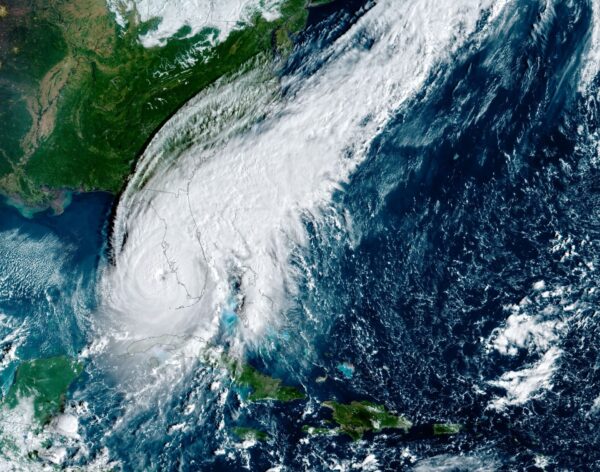
How ships escape the fury of hurricanes
How the world of cruise ships, yachting, maritime transport and ports coordinate to manage the criticalities that these phenomena can generate
Some extensive tropical depressions have developed over the North Atlantic in recent weeks. Some of these have turned into devastating hurricanes like in the case of Fiona and Ian. Ian created devastation and casualties along the way, passing first through Western Cuba and then through Florida. Once again, the extraordinary work carried out by the NHC (Noaa Hurricane Center) should be highlighted through the constant and fundamental flow of forecasts, information and alerts referred to by the numerous public and private weather centers that operate in support of the operational decisions of the maritime industry.
There are some simple principles that must be taken into consideration and that can give an idea of how complex the organization that operates to support operational decisions is. In these lines i will try to explain as simply and succinctly as possible how the world of cruise ships, yachting, maritime transport and ports coordinate to manage the criticalities that these phenomena can generate.
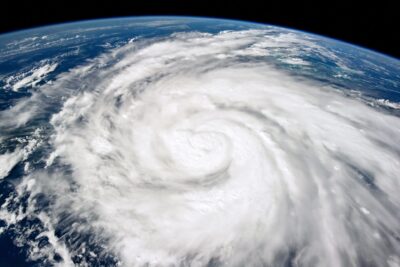
Hurricane Ian – Nasa Courtesy
Meteorological sources
Today the elaboration of mathematical models are accessible via the internet and allow you to have a good general view of high and low pressure systems, fronts, winds, waves, currents and any other parameter useful for understanding the weather at sea. The reference models on a global scale are the GFS (US model) and the ECMWF (European model), then there are a number of other models on a regional scale, higher resolution but with short-term forecasts. The comparison of the models allows to increase the understanding of the phenomenon that could be “read” in a discordant way in the medium and long term of several days. As the situation generally evolves, the different models developed by the different sources tend to converge and align.
National Centers and Private Centers
The National Centers disseminate information for the maritime community. One of the reference systems is the GMDSS Met Area which, thanks to international cooperation, covers all the various areas on a global scale with its text bulletins and warnings. The private centers that operate in support of the maritime industry are often the link between institutional sources, without which it would be impossible to be operational, and users. Private centers, such as Navimeteo, interact in a personalized and direct way, knowing the needs and characteristics, routes and operational needs of the applicant and facilitating and enhancing access to data and forecasts based on operational decisions.
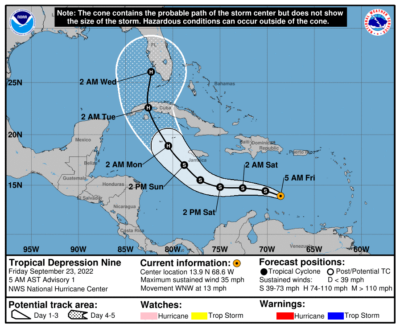
Potential Track area – NHC Courtesy
The importance of Maritime Support Centers & F.O.C.
The companies that manage fleets of ships on the routes of the world and on different itineraries are structured with their own centers called Maritime Support Centers or Fleet Operations Centers which bring together personnel expert in monitoring the routes, position and itineraries of the ships and able to provide to the Masters and the Bridge Team the necessary decision support in relation to all operational issues.
Safety is the priority but you can imagine how complex the logistical organization can be, for example for a cruise ship that has to repeatedly embark and disembark its passengers at the various calls of the itinerary. Often the problems are not only inherent to navigation but are also influenced by different factors that increase its complexity. Think for example of the difficulties generated by the Covid crisis period. In this complex system, the weather conditions certainly have a considerable importance. Think of the maneuver in port, the “tendering operations” for disembarking passengers when at anchor and the choice of the safest route during long passages or when there are bad weather forecasts.
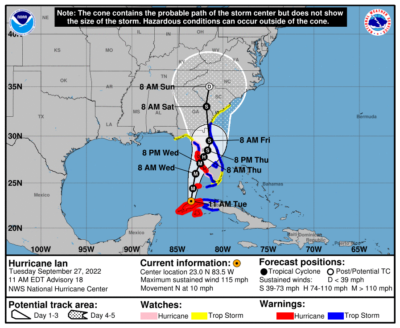
Potential track area – NHC Courtesy
The open sea and the coasts
The main criticalities very often do not concern the long routes and offshore passages, although bearing in mind the passage of tropical depressions or deep lows but above all the coastal areas and ports that can be hit by storms. When a ship or unit is “at sea” and therefore in the open sea, thanks to the ever increasing accuracy of the forecasts, it is possible to determine a route or a change of itinerary that allows to avoid or at least to avoid the area affected by heavy weather conditions critical situations.
Weather route simulation techniques have evolved a lot but most of the time the decision is the result of careful evaluations, experience and comparison between the Captain, the Officers of the Maritime Support Center and the Forecasters operating in the Weather Offices. The ability of a unit to following new routes is the first safety factor. Instead, think with what apprehension a similar situation is experienced in a port or coastal area that is on the track of a hurricane.
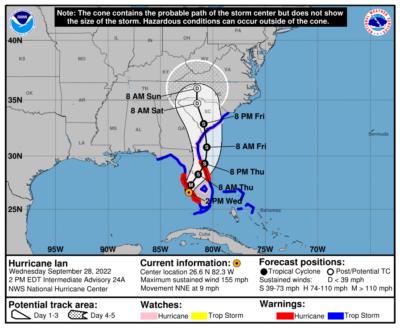
Ian landing in Florida – NHC Courtesy
At the helm a large ship and in command of a large yacht
The meteorological scenario in which maritime units are sailing is similar for a cruise ship and for a large yacht. The first has pre-established itineraries and stopovers months in advance, the second can more easily modify the navigation plan by having a less complex logistical organization. However, while the ships of the organized fleets can make use of the continuous H24 / 7 support of their Fleet Operations Center, the Master of a yacht is in some ways more alone in front to the decisions to be taken in case of critical situations. The passage of Fiona and Ian has strongly engaged all the various players in the sector involved in managing very complicated situations and decisions.
The value of experience
There is no doubt that the extraordinary technologies, in the field of instrumentation, equipment, communication and data transmission systems, software, wetaher modeling and much more have contributed in an increasingly incisive way to the safety of navigation, but I’m still convinced that in specific situations the human factor is still today extraordinarily important. It may seems anachronistic but even today, as Pierre Lasnier Head of MeteoMer (FR) told me many many years ago, the most modern thing is represented by two people talking to each other.
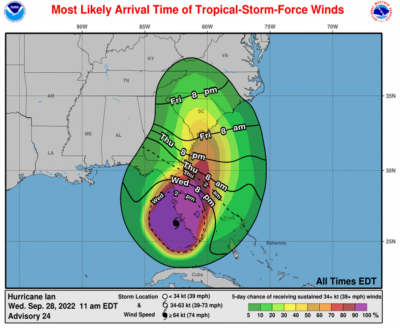
Hurricane Ian Wed 28 Sept – Courtesy NHC
Gianfranco Meggiorin
g.meggiorin@navimeteo.com



